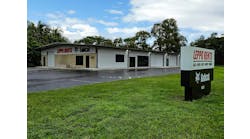At a seasonally adjusted annual rate of $495.7 billion, new construction starts in May advanced 5 percent from the previous month, according to McGraw Hill Construction, a division of McGraw Hill Financial. Much of the upward lift came from nonresidential building, which registered moderate growth for the second month in a row after its sluggish performance at the outset of 2013. Smaller gains in May were reported for housing and nonbuilding construction (public works and electric utilities).
During the first five months of 2013, total construction starts on an unadjusted basis were reported at $187.6 billion, down 3 percent from the same period a year ago. The 2013 year-to-date volume for total construction reflected a steep decline in the dollar amount for new electric utility projects relative to a robust first half of 2012. If electric utilities are excluded, total construction starts would be up 10 percent year-to-date, helped in particular by the strengthened pace for housing.
May’s data raised the Dodge Index to 105 (2000=100), up from the 100 that was reported for April, and slightly above the average Index reading for all of 2012 at 101.
“The construction industry has shown modest improvement over the past year, helped by some project types while restrained by others,” said Robert Murray, vice president of economic affairs for McGraw Hill Construction. “The housing sector played a leading role last year in lifting overall construction activity, and while this year’s month-to-month gains have been smaller, housing continues to lead the hesitant construction expansion. Nonresidential building has yet to provide much of a contribution, as tenuous gains for commercial building have been offset by further weakness for institutional building. Still, the April and May pickup for nonresidential building could be a sign of more growth to come.”
Nonresidential building in May grew 9 percent to $156.4 billion, following its 6-percent rise in April. For the commercial categories, stores and shopping centers are gathering momentum, with a 16-percent increase reported for May.
Residential building, at $206.8 billion, advanced 3 percent in May. Single-family housing, which had shown signs of leveling off in the prior two months, edged up 2 percent in May. The rate of activity for single-family housing continues to be high by recent standards, with May up 26 percent from the average monthly pace during 2012. By geography, single-family housing in May revealed gains in the Midwest, up 6 percent; the West, up 5 percent, and the South Atlantic, up 2 percent; but declines in the South Central, down 2 percent; and the Northeast, down 6 percent. Multifamily housing in May grew 7 percent, and its May volume was up 24 percent from the average monthly pace during 2012.
Nonbuilding construction in May increased 2 percent to $132.4 billion. Highway and bridge construction bounced back 11 percent after a 26-percent drop in April, continuing the up-and-down pattern that’s been present so far in 2013. Relative to last year, the stronger months for highway and bridge construction in 2013 have outweighed the weaker months, resulting in a 6-percent year-to-date gain.
The 3-percent downturn for total construction starts on an unadjusted basis during the first five months of 2013 reflected a 29-percent pullback for nonbuilding construction. While the public works portion of nonbuilding construction was up 5 percent year-to-date, electric utilities were down 70 percent.
McGraw Hill Construction provides data, news, insights and intelligence designed to better inform construction professionals’ decisions and strengthen their market position.





